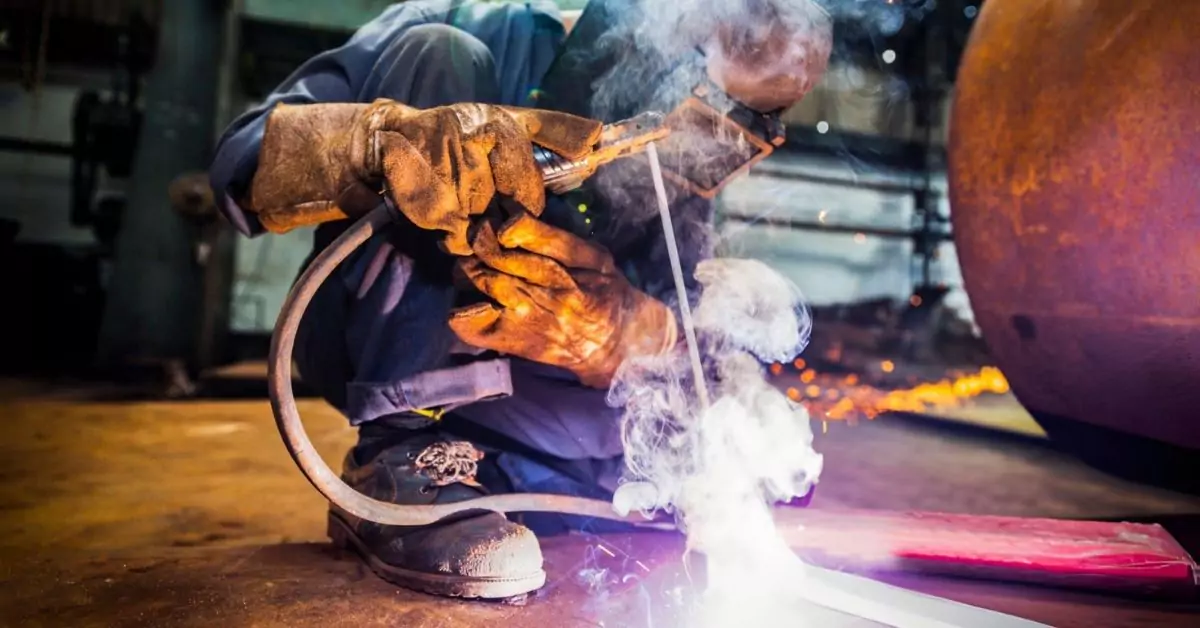Table of Contents
- What is Welding?
- Importance of Welding in Various Industries
- Different Types of Welding
- 1. Shielded Metal Arc Welding (SMAW)
- 2. Gas Metal Arc Welding (GMAW/MIG)
- 3. Gas Tungsten Arc Welding (GTAW/TIG)
- 4. Flux-Cored Arc Welding (FCAW)
- 5. Submerged Arc Welding (SAW)
- Choosing the Right Welding Machine
- Factors Affecting Welding Machine Price
- Conclusion
Welding and Its Types: A Comprehensive Guide for Beginners
What is Welding?
It is a process which connects different materials, mostly thermoplastics or metals, applying high-temperature heat to melt the pieces and then allowing them be cool to cause an ensuing fusion. In contrast to brazing and soldering, that do not cause melting of the metal base welding melts the components and usually adds filler to create an extremely strong join.
Welding is a necessity in numerous sectors, such as automobile, construction aerospace and construction because it can make strong and long-lasting connections. From constructing skyscrapers to fixing machinery, welding is an important role in the daily routine of our lives.
Importance of Welding in Various Industries
Welding is much more than an activity; it’s a fundamental element in the construction of a variety of industries.
- Construction: The use of welding is in the construction of bridges, buildings pipelines and bridges. It provides the strength and stability.
- Automotive: The HTML0 code is crucial in the production and repair of vehicle components that ensures safety and efficiency.
- Aerospace: The precision of welding vital for assembly of parts of spacecraft and aircraft.
- Manufacturing: Different manufacturing procedures that involve metallic products, are based on a variety of welding methods.
Different Types of Welding
1. Shielded Metal Arc Welding (SMAW)
Also referred to in stick welding, it is among of the more popular kinds of welding. It uses the use of an electric arc between an electrode covered in metal and the piece of work, which creates the welding. This method is extensively used due to its efficiency and ease of use.
Advantages:
- Cost-effective equipment.
- Ideal for use outdoors and used on materials that are dirty or rusty.
Disadvantages:
- Requires frequent electrode replacement.
- Limited to shorter lengths of weld.
2. Gas Metal Arc Welding (GMAW/MIG)
GMAW is also known as Metal Inert Gas (MIG) welding, utilizes an uninterrupted wire feed to serve to act as an electrode, and also an inert gas like argon to shield the weld against pollution. This technique is suitable for materials with thin walls and offers an uncontaminated weld.
Advantages:
- Fast welding speeds.
- A minimal post-weld clean is required.
Disadvantages:
- The cost of equipment can be high.
- Not suitable for outdoor welding.
3. Gas Tungsten Arc Welding (GTAW/TIG)
Tungsten Inert Gas (TIG) welding employs a non-consumable electrode of tungsten to create the weld. TIG welding is renowned for its accuracy and control. It’s ideal for work with intricate small-sized materials such as aluminum and stainless steel.
Advantages:
- Produces high-quality, clean welds.
- Sparks and spatter are not present.
Disadvantages:
- Needs a significant amount of experience and skill.
- Process is more slow in comparison to other welding methods.
4. Flux-Cored Arc Welding (FCAW)
FCAW is like GMAW however it uses a tubular wire that is filled with flux. The process is able to be utilized either with or without shielding gas, and makes it ideal for welding heavy material.
Advantages:
- Speed of welding is high.
- It is ideal for windy weather.
Disadvantages:
- Costlier consumables.
- Slag is produced that needs to be eliminated.
5. Submerged Arc Welding (SAW)
In SAW it is possible to have the arc immersed in a layer the granular flux that prevents sparks and spatter. SAW is typically used to protect large heavy, dense materials like shipbuilding or pressure vessel construction.
Advantages:
- Rates of deposition that are extremely high.
- The welding fumes are minimal and there is no spatter.
Disadvantages:
- Limited to flat and horizontal position.
- It is heavy and is not transportable.
Choosing the Right Welding Machine
Selecting the correct welding device is dependent on the kind of welding you plan to carry out. There are a few things you should be aware of:
- Welding Process: Different types of equipment are needed to use different welding methods (e.g., SMAW, GMAW or GTAW).
- Material Type and Thickness: More dense materials need higher-powered equipment.
- Power Supply: Check that the machine is connected to the power supply that is available (e.g. 110V or 220V).
- Capability: Consider whether you require a portable device to perform on-site work.
Factors Affecting Welding Machine Price
Many factors affect the cost of a welding machine’s cost:
- Quality and Brand: Well-known brands often provide more durable and reliable devices.
- The type of welding machine: Different machines (e.g. TIG, MIG, Stick) are priced differently.
- Other Features: Features that are more advanced, such as the ability to set up automatic settings, digital displays and multi-process capabilities may raise the cost.
- Power Capacity: machines with greater capacity power consumption generally have higher prices.
Conclusion
Welding can be a diverse and important process in many sectors. Learning about the various kinds of welding, and choosing the right welding equipment will significantly affect the final performance of your project. If you’re just starting out or a professional with years of experience having the proper equipment is vital. Make sure you consider the product, welding procedure, and other options prior to buying a welding device to make sure that you are getting the highest price for your money.
For further information about welding equipment, the prices they charge or other related questions about welding you can reach for experts such as the ES HAJI and CO for assistance and guidance.




